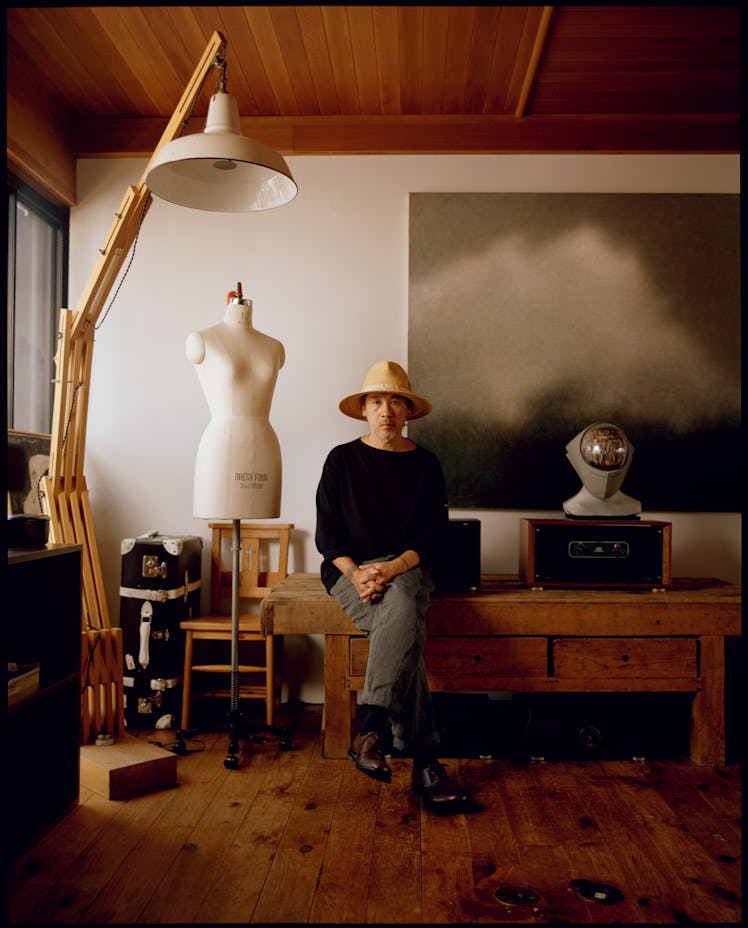35 Years Later, Jun Takahashi’s Undercover Still Thrives on Mystery
The elusive designer behind the cult Tokyo label reflects on his punk roots, creative purity, and what it takes to stay authentic in an age of imitation.

This year marks the 35th anniversary of Undercover, the Tokyo-based brand you started when you were 21. You have transformed streetwear with evocatively layered references, from punk and music to film and couture. Has your design process changed since you started?
For the past 35 years, I have continued to create with almost no change, always centering on the things that interest me.
What does the name Undercover mean to you?
The name was chosen from the idea of wanting the brand to have a secretive, mysterious atmosphere.
As a student in the late ’80s, you were the vocalist in a tribute band called the Tokyo Sex Pistols. What drew you to punk?
Music and visuals that break preconceived notions, and a contrarian attitude of looking at things from a slanted angle.
You blurred the line between streetwear and high fashion long before that became mainstream.
For me, someone who spent my youth in the 1990s, blending streetwear and high fashion was a natural thing. Although it seems that many products nowadays imitate that direction, what is important is whether there is soul in them.
While you were at Bunka Fashion College in the late ’80s, Rei Kawakubo, Yohji Yamamoto, and Issey Miyake were revolutionizing fashion with their designs. What do you remember most vividly about that era?
A struggle between my first experiences with nightlife and an overwhelming load of homework.
Some of your most memorable collections have been beautiful but eerie—for instance, the dresses inspired by the twins from The Shining, from spring 2018, and the terrarium dresses, glowing and filled with roses and butterflies, from spring 2024. What do you want people to feel when they see those shows?
The complex emotions usually kept locked away deep in the heart.
A look from the Undercover fall 2025 collection.
Music has played a major role in your collections. How do you translate sound into fashion?
Music is always accompanied by record jackets, artwork, and the visuals of artists. I use these elements and translate them into clothing.
What are you listening to these days?
Recently, I listen mainly to Japanese rock and pop. The Kosmik Musik playlist I’ve been releasing on Spotify includes fantastical songs, tracks that emphasize intensity, songs that convey calmness, and more. I hope to express a progression like that of a movie.
You are known as a big runner. What’s your routine?
Three times a week, each time six to 10 kilometers. I’m eliminating negative thoughts. I consider running a meditative activity for fostering design ideas and mental composure.
Painting has been your personal hobby for years. The first public exhibition of your art, They Can See More Than You Can See, was in Tokyo in 2023. What does painting give you that fashion does not?
Drawing is a more personal and free creative activity. What I gain from it is a self I didn’t know before. That is what I seek.
Your paintings often depict hybrid figures or haunting faces. Are they autobiographical in any way?
Maybe so. I don’t particularly pay attention to it, though.
Do you ever see your painting and fashion practices colliding?
I want to keep them separate.
What are you working on now?
Something that cannot be explained in words.
Photo Assistant: Yunosuke Mimura.